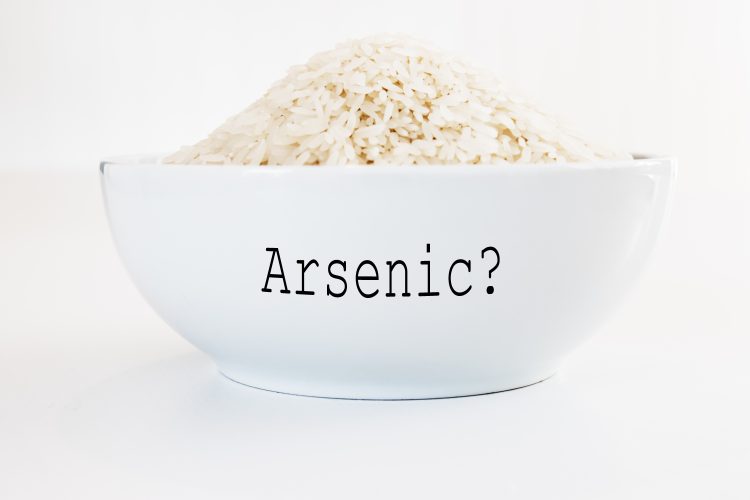Top 5 high risk ingredients when it comes to heavy metals
- Like
- Digg
- Del
- Tumblr
- VKontakte
- Buffer
- Love This
- Odnoklassniki
- Meneame
- Blogger
- Amazon
- Yahoo Mail
- Gmail
- AOL
- Newsvine
- HackerNews
- Evernote
- MySpace
- Mail.ru
- Viadeo
- Line
- Comments
- Yummly
- SMS
- Viber
- Telegram
- Subscribe
- Skype
- Facebook Messenger
- Kakao
- LiveJournal
- Yammer
- Edgar
- Fintel
- Mix
- Instapaper
- Copy Link
Posted: 21 August 2019 | Jacyln Bowen | No comments yet
When did you last take a look at the safety and quality of your ingredients in relation to heavy metals? Jaclyn Bowen from the Clean Label Project gives you the top 5 ingredients at risk in her heavy metal ‘cheat sheet’.


On August 14th, the Los Angeles City Attorney, Mike Feuer1, announced that his office reached an unprecedented $1.75 million settlement, including $1.5 mn in consumer restitution, with Rainbow Light Nutritional Systems, LLC and affiliated companies – all owned by The Clorox Company. The reason: unsubstantiated label claims and high levels of lead in prenatal vitamins.
While you may have your HACCP (Hazard analysis and critical control points) programme squared away and Global Food Safety Initiative Benchmarked Standard certificate in hand, when was the last time you took at a look at the safety and quality of your ingredients through the lens of heavy metals?
Not to worry. Here’s a cheat sheet for the high-risk ingredients to watch out for…
-
Culprit: Chocolate:
Heavy Metal of Concern: Cadmium
According to Berkeley Wellness2, Cadmium is naturally found in soil – a result of, for example, volcanic activity, forest fires, and weathering of rocks – and is taken up by many plants, including cocoa. However, soil can also be contaminated by “man-made” sources of cadmium, such as from the manufacturing of certain batteries and the use of phosphate fertilizers.
In 2016, consumer health watchdog As You Sow3 released results showing that 35 of 50 chocolate products tested, expose consumers to lead and cadmium above levels set by California’s Safe Drinking Water and Toxic Enforcement Act. The European Union4 recently implemented maximum Cadmium tolerances in cocoa products. Do you know how your cocoa supplier fairs?
-
Culprit: Rice and rice-based ingredients
Heavy Metal of Concern: Arsenic
In 2012, Dartmouth released a study5 revealing high levels of arsenic in foods sweetened with brown rice syrup. Today, the arsenic in rice saga continues. In 2017, Congresswoman Rosa DeLauro (CT-03) introduced legislation6 to limit the amount of inorganic arsenic that is permitted in rice and rice-based products.
Time to take a look at how your rice-based ingredients stack up.
-
Culprit: Fish-based ingredients
Heavy Metal of Concern: Mercury
According to Harvard Health7, fish is an excellent source of protein, and its healthy oils protect against cardiovascular disease. However, nearly all fish and shellfish contain traces of mercury, a toxic metal. As small fish are eaten by larger fish up the food chain, concentrations of mercury increase, so that large, predatory deep-ocean fish tend to contain the highest levels. Do you use fish-based ingredients or fortify with fish oil? Perhaps it’s time to have the finished product tested for mercury levels.
-
Culprit: Spices
Heavy Metal of Concern: Lead
In October 2018, a child in Michigan was diagnosed with lead poisoning. The contamination was detected as a result of an investigation8 into a child with elevated blood lead levels possibly linked to cooking spices. It was ultimately narrowed down to curry powder. This investigation contributed to a number of curry powders being recalled due to lead9. Do you flavor your products with curry powders?
-
Culprit: Water
Heavy Metal of Concern: Lead
While the FDA Code of Federal Regulations10 is pretty prescriptive for what it takes for waster to be considered potable, news about high levels of lead in the municipal water supply continue. On August 19, 2019, Rolling Stone published11 an article entitled From Flint to Newark to Pittsburgh: Why do American Cities Fail to Protect Our Water? highlighting that in some of these major cities, bottled water is being passed out to residents for drinking and cooking.
Time to check the water purity and safety of the water used at your facility.
About the author
Jaclyn Bowen MPH, MS is the Executive Director of Clean Label Project and a food safety and quality systems engineer. Prior to coming to Clean Label Project, she spent 15 years at the World Health Organization Collaborating Centre, NSF International, working on the creation and enforcement of food safety and water quality standards and compliance systems.
- https://www.lacityattorney.org/single-post/2019/08/14/LA-CITY-ATTORNEY-MIKE-FEUER-REACHES-LANDMARK-SETTLEMENT-WITH-RAINBOW-LIGHT-REDUCING-LEAD-IN-PRENATAL-VITAMINS
- https://www.berkeleywellness.com/healthy-eating/food-safety/article/there-cadmium-your-cocoa
- https://www.asyousow.org/environmental-health/toxic-enforcement/toxic-chocolate
- https://ec.europa.eu/food/sites/food/files/safety/docs/cs_contaminants_catalogue_cadmium_chocolate_en.pdf
- https://news.dartmouth.edu/news/2012/02/organic-food-sweetener-may-be-hidden-source-dietary-arsenic
- https://delauro.house.gov/media-center/press-releases/delauro-introduces-legislation-limit-arsenic-rice
- https://www.health.harvard.edu/staying-healthy/what-to-do-about-mercury-in-fish
- https://www.freep.com/story/news/local/michigan/2018/10/26/lead-tainted-curry-powder-michigan/1776948002/
- https://www.foodsafetynews.com/2018/10/more-curry-recalled-for-excessive-lead/
- https://www.accessdata.fda.gov/scripts/cdrh/cfdocs/cfcfr/CFRSearch.cfm?fr=1250.3
- https://www.rollingstone.com/politics/politics-news/flint-newark-pittsburgh-lead-in-drinking-water-873584/
Related topics
Clean Label, Contaminants, Food Safety, Outbreaks & product recalls, recalls






